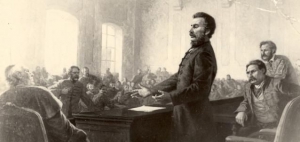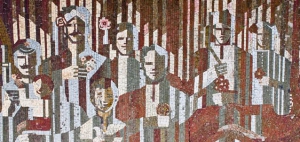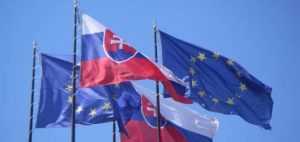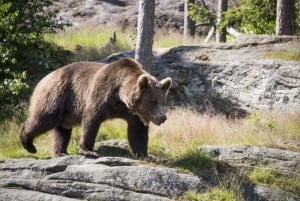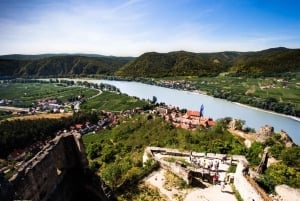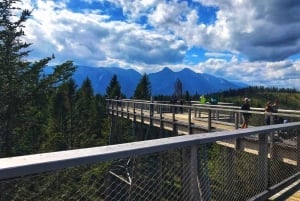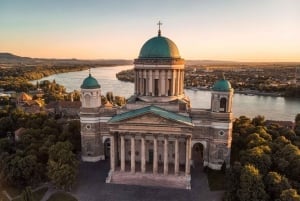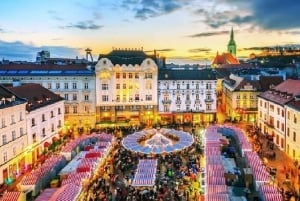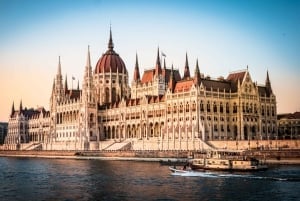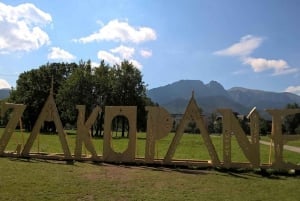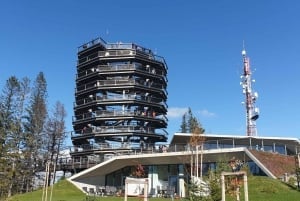History of Slovakia
Slovakia (The Slovak Republic), not great, but not quite a small country, is located right in the geographical centre, respectively in the heart of continental Europe. Its closest neighbours adjoining to are the Czech Republic to the west, Poland to the north, Ukraine to the east, which is also the boundary separating the Schengen area of common European one, Hungary to the south and Austria with small part of the border.
Although viewing from the centres of Western powers its location was on their periphery, the territory has always been in the centre of inner-European operations as a frequent boundary and buffer zone long ago the conquests from the east. Protection and shelter were created the massifs of the Western Carpathians at its western and northern edge that southwards were concentrated to the valleys and down to the lowlands. The highest part of the entire Carpathian massif in the north are the peaks of High Tatras, in the south it is largely river Danube, which create some natural border of a territory. In the east, in front of the middle part of the Carpathian mountains there is a large East Slovakian Lowland.
The basements of original settlement of Slovakia were located into its valleys, which were also the natural communication arteries and intersections of different parts of Europe. The oldest traces of settlement are the cast of intracranial cavity of the early prehistoric man from Gánovce, so called the Gánov Neanderthal and two bones of Neanderthal man approximately 120,000 years old. Another remarkable artefacts from the Slovak territory is the statue of a woman from mammoth ivory, the Moravian Venus of about 23,000 years old.
The frontier of the Roman Empire were created here in ancient times, Limes Romanus, along the Danube River. The Carpathian capes often witnessed the battles between the Romans and the 'barbarians', Marcomanni and Quadi. At the time of the first centuries after Christ especially Celts settled here, after which a lot of notable landmarks, mainly bronze objects were found. The area was invaded also by Veneds from the north, and Dacians from the south.
Sometimes in the 5-6th centuries Slavs began to penetrate into the space already focusing mainly on agriculture, who supposedly peacefully merged with the indigenous population here.
Slavs founded here in the first half of the 6th century the first tribal alliance, the formation called after its ruler Samo. The Samo's Empire was well-founded against lustful appetites of the hegemony of the Franks, as well as the union fro defence against incrusions by nomadic Avars. The Samo's Empire, although not long existed, but it formed the basis for creation of several Slavic principalities, which were united in the 9th century in this area. This resulted into the Great Moravia, the first state department of ancient Slovaks and Moravians.
This formation creates the supporting axis also of present Slovak statehood. In this period, Slovakia adopted the official Christianity from hands of the Thessalonian brothers Constantine and Methodius in 863 and the old-Slovak language was also promoted by Pope after Hebrew, Latin and Greek as a liturgical language. With this step also the foundation of the first archdiocese eastwards from the Frank Empire was connected.
The Great Moravian Empire during the reign of Prince-King Svätopluk in the second half of the 9th century fully dominated the Central European area. However, at the end of the century it succumbed to invasions of old Hungarians, who, however, for their maintaining in the European environment, were forced to adopt their culture and to find coexistence with the original population of the Carpathian Basin, therefore also with the old Slovaks.
On remains of the ancient Slavic principalities, the old Hungarians formed at the end of the 1st millennium the strong empire - the Ugrian Kingdom. In this state department Slovaks lived at first up to the 18th century as an equal partner within the ethnic sense. They even managed to survive, especially towards the end of the millennial era, despite cruel assimilation pressure of Hungarians. The result of this oppression was that during the revolutionary years 1848 Slovaks appeared for the first time on a stage of European history as a substantive, modern nation with its requirements, especially against national oppression and the need for independence.
The break in unequal cohabitation with the Hungarians did only the end up the World War I. with its outcome, and thereof resulting disintegration of the Austro-Hungarian Empire, which was also called the jail of nations. So, Slovakia after the millennium came to the partial emancipation and by joining in 1918 with the countries of the Czech crown it began to form a new state structure the Czechoslovak Republic, when also the enumerative borders of the territory were done. This structure survived in this form (except years of the World War II. 1939-1945, when out of Hitler's power, Slovakia was a separate state) till the end of 1992.
Since January 1, 1993, the Slovak Republic, after internationally recognized decent and easygoing separation with the Czech Republic, is a sovereign, independent state and now also a member of the European Union.
This brief summary of history is intended to serve as a basic overview of Slovakia and its development.
Of course, it is difficult to represent, and neither it is a purpose here to do so, all the historical blasts, as the Tatar invasions, the Turkish occupation, endless infighting of nobles, devastation of the country and the population, again settlement of looted areas by the Wallachian colonization or mainly in the mining towns by Germans, and the subsequent boom. Boom was noted particularly by mining towns in the Middle Ages, when Slovakia was a major store of gold, silver or copper of the entire Europe and when the ancient Bratislava, today the capital of Slovakia, was a stronghold of anti-Turkish resistance and the coronation seat of the Hungarian kings.
Numerous fortified castles rose in Slovakia against looters, later on also pearls of sacral and secular architecture were built here. The Carpathian rocks with his mighty protection and deep valleys therein, thus were a haven, and the rich and mast lowlands were a reservoir for settlers from primordial Celtic population, Slavs, Hungarians, and later still of German immigrants, Wallachian colonizers, Czech protestants and even in the east of the primary Ruthenians.
This is our common human melting pot in which we live today, and where we Slovaks, but also other nationalities living here, want to introduce to you.


